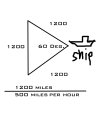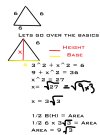Install the app
How to install the app on iOS
Follow along with the video below to see how to install our site as a web app on your home screen.
Note: This feature may not be available in some browsers.
-
Please take a moment and update your account profile. If you have an updated account profile with basic information on why you are on Air Warriors it will help other people respond to your posts. How do you update your profile you ask?
Go here:
Edit Account Details and Profile
You are using an out of date browser. It may not display this or other websites correctly.
You should upgrade or use an alternative browser.
You should upgrade or use an alternative browser.
1,001 questions about the ASTB (post your scores & ask your questions here!)
- Thread starter edato
- Start date
Hey all,
Took form #4 today without really studying much. I looked at the marine gouge, a practice Peterson's test someone posted here and one of the ARCO practice tests...probably spent 4-5 hours tops. Background is Mech. Engineering in college and work as a navy contractor now. Scored OAR 57 AQR/PFAR/FOFAR 7/7/8 I think thats probably good enough, but we shall see. Thanks to everyone who provided gouge....I'm submitting my package for the March selection boards for SNA only...I'll keep everyone informed!
Took form #4 today without really studying much. I looked at the marine gouge, a practice Peterson's test someone posted here and one of the ARCO practice tests...probably spent 4-5 hours tops. Background is Mech. Engineering in college and work as a navy contractor now. Scored OAR 57 AQR/PFAR/FOFAR 7/7/8 I think thats probably good enough, but we shall see. Thanks to everyone who provided gouge....I'm submitting my package for the March selection boards for SNA only...I'll keep everyone informed!
rn87
New Member
ASTB Prep Test questions
I just recently graduated college and am now putting all of my effort into studying for this ASTB exam I have on the 10th of Feb. and I'm trying to break down every problem I don't understand so if I get one like it I won't look like a deer in the headlights. So for anyone out there Im trying to solve the question
33. Two F-18s are catapulted off an aircraft carrier and fly on courses that diverge at a 60 degree angle. If each flies at a constant rate of 500 mph, how many hours will the fighters be 1200 miles apart?
If anyone could help I would really appreciate it if you could show the steps of how to get the answer.
I just recently graduated college and am now putting all of my effort into studying for this ASTB exam I have on the 10th of Feb. and I'm trying to break down every problem I don't understand so if I get one like it I won't look like a deer in the headlights. So for anyone out there Im trying to solve the question
33. Two F-18s are catapulted off an aircraft carrier and fly on courses that diverge at a 60 degree angle. If each flies at a constant rate of 500 mph, how many hours will the fighters be 1200 miles apart?
If anyone could help I would really appreciate it if you could show the steps of how to get the answer.
 Okay since its an equilateral triangle you can determine that each side is 1200 miles. For my ASTB studying and technique I have been including the units in my multiplication and division to make sure I get the correct number and the correct unit that the question is asking for. For this question they want time, so do the math , then cross out of the miles of the division equation leaving you X Hour.
Okay since its an equilateral triangle you can determine that each side is 1200 miles. For my ASTB studying and technique I have been including the units in my multiplication and division to make sure I get the correct number and the correct unit that the question is asking for. For this question they want time, so do the math , then cross out of the miles of the division equation leaving you X Hour.rn87
New Member
Since it is an equal lateral triangle draw a line from the top point straight down... That cuts the bottom length by two thus equalling length 3. Use pathagorian theorem (A^2 + B^2 = C^2) to solve for the height. Then use your equation 1/2bh to solve for the area.
Yeah, good post popofosho....
Rn87 did you see where you were messing up? Your equation was correct but subtracting 9 from 36 gives you 27 not 30. Thus 3root3 is the square root of 27....
Rn87 did you see where you were messing up? Your equation was correct but subtracting 9 from 36 gives you 27 not 30. Thus 3root3 is the square root of 27....
While assaulting a fortified machine gun bunker, a Marine fired 2000 rounds during two engagements. If he fired 800 rounds more in his first engagement that in his second, how many rounds did he fire during his first engagement?
You have to set up a system of equations. Let X = first engagement, let Y = second engagement.
so X + Y = 2000
We also know that the difference between the amount of rounds expended is 800. So we can say,
X - Y = 800
Now, we can re-arrange this equation to state,
X = 800 + Y
Substitute this value for X into the first equation (X + Y =2000)
so now, we can say
(800 + Y) + Y = 2000
So 2Y = 1200
Y = 600 rounds
Since X + Y = 2000,
X + 600 = 2000, so X = 1400, which is 800 more than Y.
Ew, that's a lot of numbers. I just picked a sufficiently large number and started to add 800.
400 + 1200 = 1600
500 + 1300 = 1800
600 + 1400 = 2000
But then, I always try to avoid actually thinking on these things.


